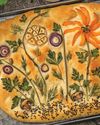
Slime, gunk, goo. Whatever you call it, are you fascinated or disgusted by the slippery stuff – or a bit of both?
Yes, gloop is gross, but slime has been sold as a toy for almost half a century and is more popular than ever. Some people love making slime and spend hours stretching and squishing it between their fingers. Even famous people seem happy to have buckets of yellow yuck and green gunge hurled in their faces or dumped all over them on TV. Neither solid nor liquid, but somewhere weirdly in-between, it’s no surprise that gunk makes some people gag. Yet many others would love to get seriously slimed. So, if it’s so disgusting, what is its appeal? Could it be that slime somehow... is our friend?
It’s snot what you think
None of us are strangers to slippery slime. Our bodies are full of it. A thick layer of mucus protects your stomach walls and helps food move through your guts. It’s surrounds your eyes and coats your mouth and throat. It shields your organs, stopping them from drying out. In the nose and lungs, snot traps and flushes out unwanted body invaders, such as infectious bacteria, dust and smoke.
If you’re wondering how it got there, many of your body’s tissues produce it. You’ll be most familiar with the stringy stuff from the snot you snort out of your nose. Now, imagine being made to swallow more than a litre of that yucky stuff. Well, sorry to inform you, but you already do just that every day, without even realising it.
Healthy human bodies produce about 1.5 litres of mucus per day. You only really notice it when you have an infection, and it gets thicker, becoming the gross gunk that lodges in your throat and makes you dread peeping in your tissue after a hearty nose blow.
This story is from the Issue 67 edition of The Week Junior Science+Nature UK.
Start your 7-day Magzter GOLD free trial to access thousands of curated premium stories, and 8,500+ magazines and newspapers.
Already a subscriber ? Sign In
This story is from the Issue 67 edition of The Week Junior Science+Nature UK.
Start your 7-day Magzter GOLD free trial to access thousands of curated premium stories, and 8,500+ magazines and newspapers.
Already a subscriber? Sign In

What happens to the ocean if we take out all the fish?
Find out about the vital role fish play in sea life.

Cleopatra's lost tomb
You told us that historical mysteries capture your imaginations, so here's an ancient Egyptian riddle.

Kate Speller
For our readers' issue, we met a zookeeper who works with big cats.

Voyager 1 turns back on
At more than 15 billion miles from Earth, the Voyager 1 spacecraft is the most distant human-made object in space.

Orangutan uses plants to heal wound
For the first time ever, a wild animal has been observed healing a wound using a plant as medicine.

Mammoth marine reptile found on UK beach
Scientists believe the ichthyosaur could be the largest ever found.

THE LAB
Three things to make and do

The brains between the sticks
Is it true that goalkeepers see the world differently?

ALIEN HUNTERS
JD Savage blasts off on an out-of-this world quest to find life beyond Earth's borders.

NATURE IN FOCUS
Join in with Science+Nature's trail at Cheltenham Science Festival.